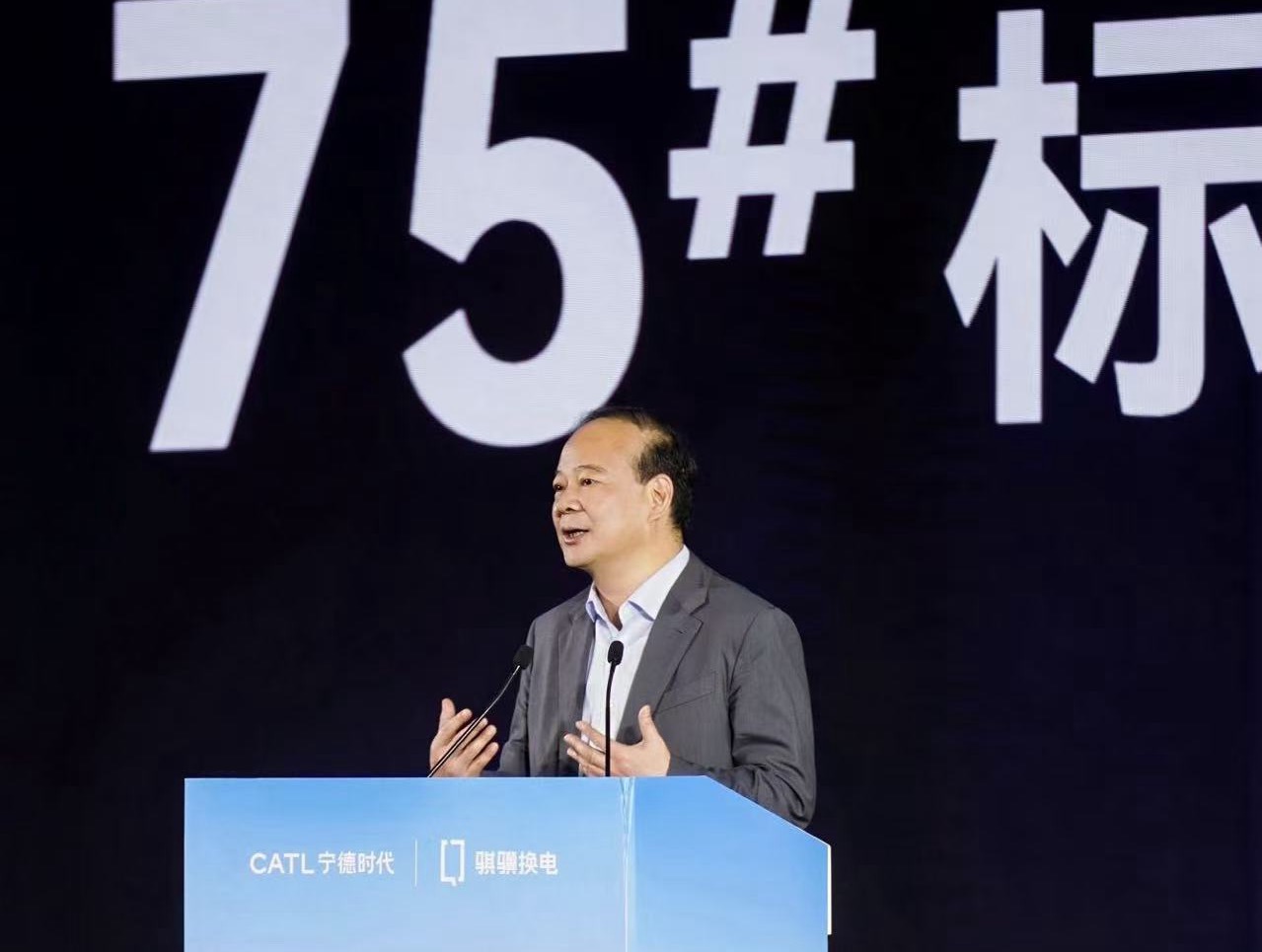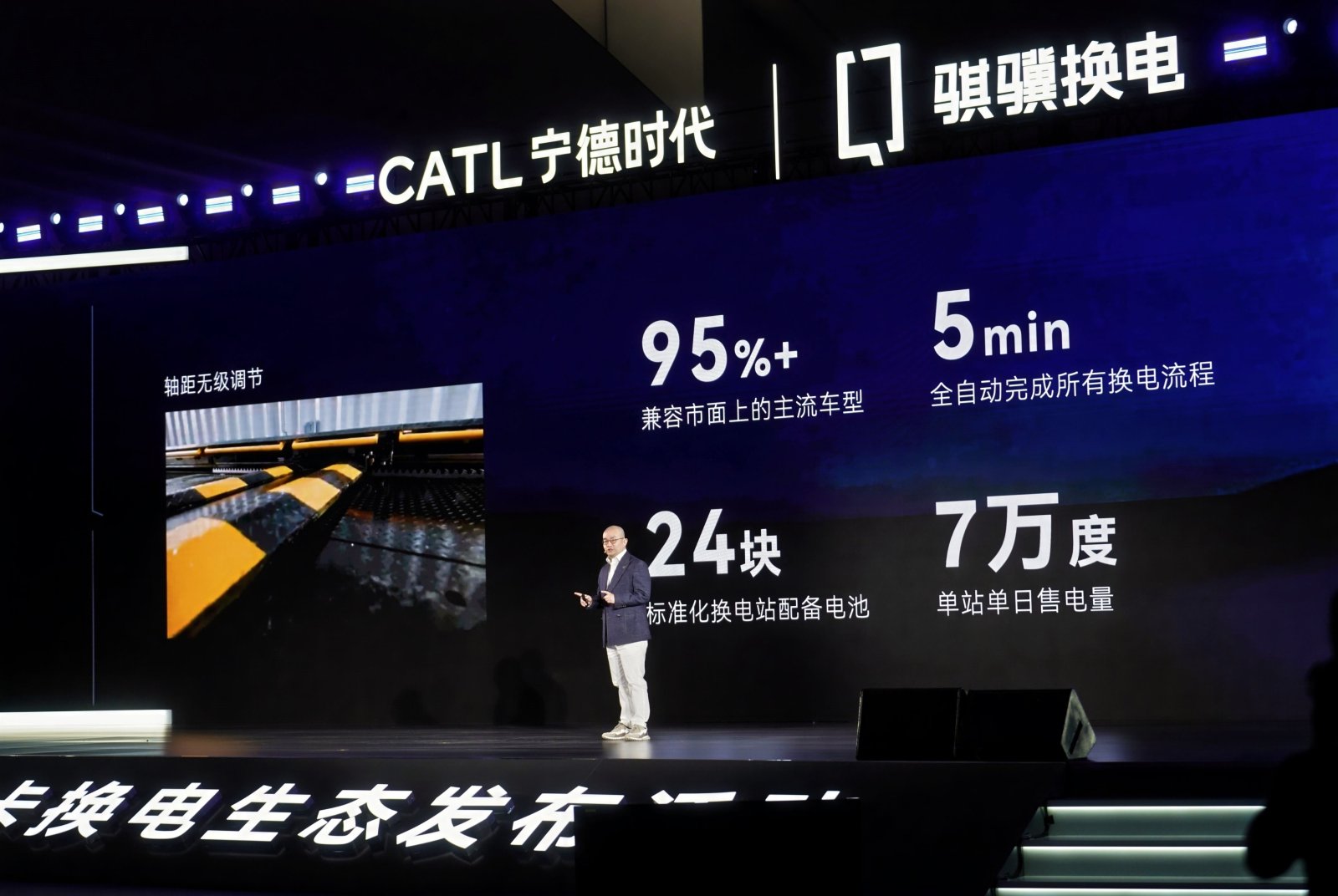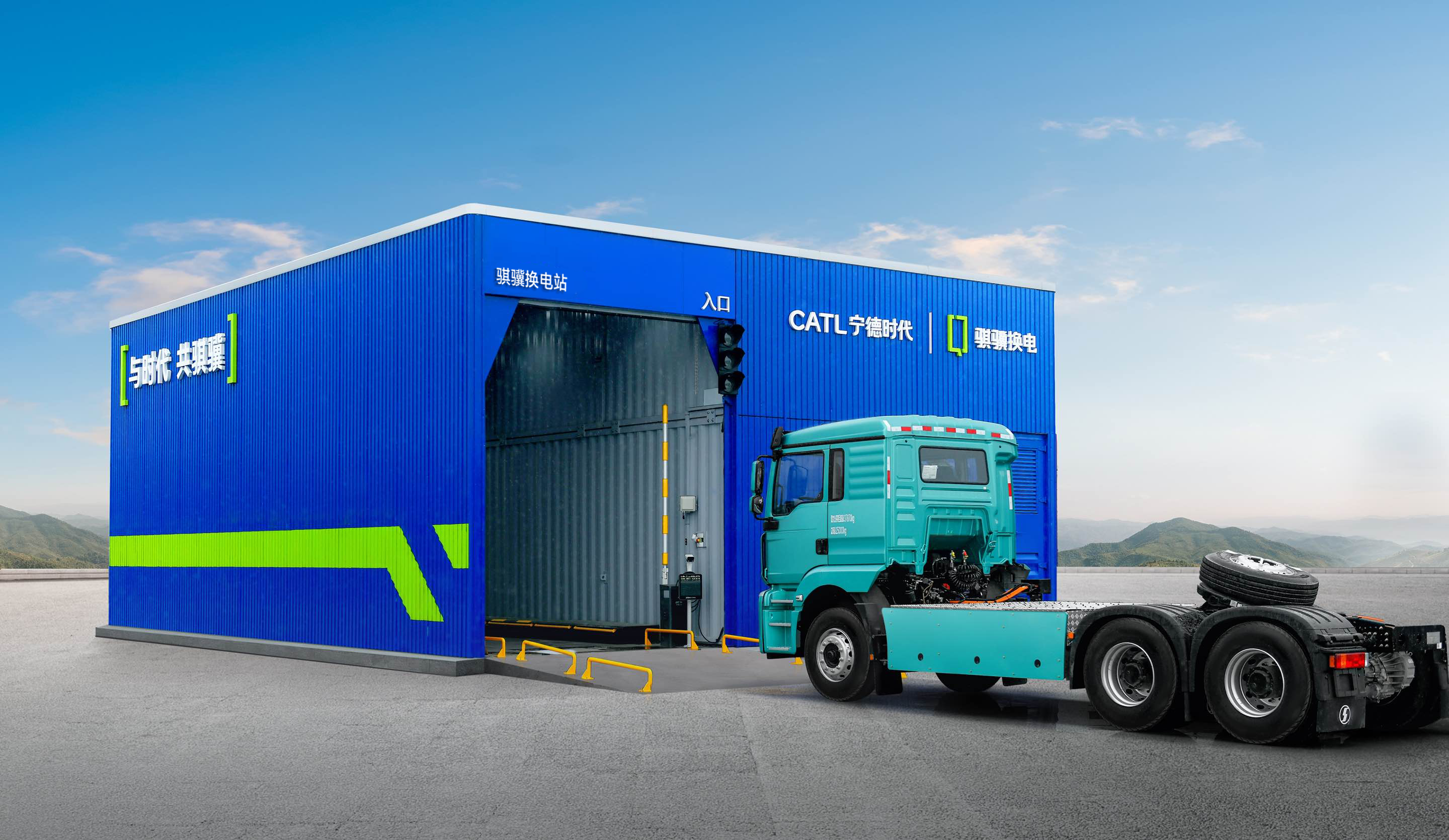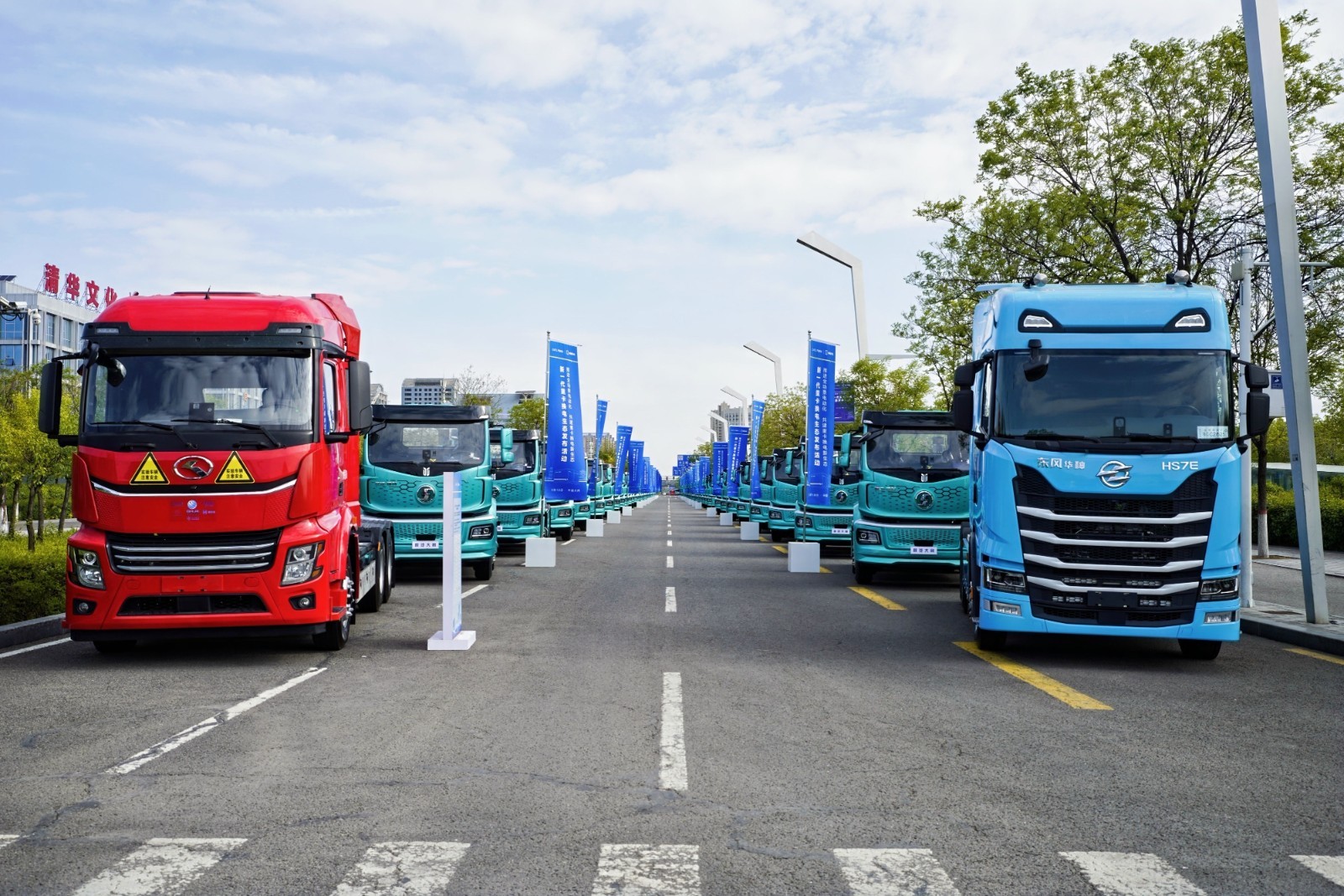CATL Unveils 75# Standardized Battery Swap Block, Builds "Eight Horizontal and Ten Vertical" Battery Swap Network
On May 18, the Release Event for the New Generation Heavy-Duty Truck Battery Swap Ecosystem, co-hosted by the China Communications and Transportation Association and CATL, was held in Datong, Shanxi. At the event, CATL officially launched the 75# standardized battery swap block and a full-scenario chassis battery swap solution, and announced the goal of building an "Eight Horizontal and Ten Vertical" green battery swap network covering 80% of the national trunk transportation capacity by 2030, as well as the target of driving the electrification penetration rate of heavy-duty trucks beyond 50% within three years.

Lu Dongliang, the Executive Vice Governor of Shanxi Province, stated that Shanxi will accelerate the development of heavy-duty truck electrification and the battery swap industry to support the energy transition. Guan Zhao, Deputy Director of the Transportation Service Department of the Ministry of Transport, emphasized that policy support will be used to promote the integrated development of transportation and energy. Sun Fengchun, an academician of the Chinese Academy of Engineering, believes that chassis battery swapping is more conducive to the full electrification of heavy-duty trucks and the integration of transportation and energy.
Launch of the 75# Standardized Battery Swap Block
Robin Zeng, Chairman and CEO of CATL, stated that under the dual challenges and opportunities of decarbonization and logistics cost reduction, the heavy-duty truck industry will experience explosive growth in the next three years, achieving an electrification rate of 50%.
At the event, Robin Zeng officially launched the 75# standardized battery swap block, which has three core advantages: First, it achieves the lowest ton-kilometer cost throughout the entire lifecycle; second, its safety performance meets the highest industry standards; third, it perfectly adapts to the standardized requirements of the battery swap model.

Comprehensive Breakthroughs of the Qiji Battery Swap Solution
CATL's Qiji battery swap solution achieves "four breakthroughs" in standardization, economics, full-scenario applicability, and full-ecosystem integration. Yang Jun, CEO of CATL's battery swapping arm CAES, said that in terms of standardization, the 75# battery swap block has the longest service life in the industry. It supports free selection of battery swap blocks, and chassis battery swapping is both safe and cost-effective. The separation of vehicles and batteries can also reduce R&D costs for automakers and purchasing costs for users. Currently, the Company has jointly launched more than 30 chassis battery swap vehicle models with over ten automakers.
In addition, the Qiji standard battery swap station is compatible with 95% of mainstream vehicle models through stepless wheelbase adjustment and adaptive posture technology, allowing vehicles of different brands and models to experience smooth battery swapping at Qiji stations. A single future super hub station displayed on site can achieve a daily battery swap capacity of over 700,000 kWh.

Through the joint efforts of the entire industry, Qiji battery swapping has achieved "electricity-gas price parity" in the heavy-duty truck sector. For heavy-duty trucks using Qiji chassis battery swapping, calculated based on driving 100,000 kilometers annually, the cost per kilometer is RMB 0.62 lower than that of diesel trucks, resulting in an annual income increase of RMB 60,000; compared with LNG heavy-duty trucks, the cost per kilometer is RMB 0.2, with an annual income increase of RMB 20,000. Moreover, electricity prices are stable and not affected by gas price fluctuations.
In the future, with further energy consumption reductions and the continuous improvement and expansion of the network, electric being cheaper than LNG will become the norm, enabling heavy-duty truck users to save more and earn more as they use more.

Building the National "Eight Horizontal and Ten Vertical" Battery Swap Network
CATL will firmly invest resources in building battery swap trunk networks. According to the plan, by 2025, 300 battery swap stations will be built in 13 core regions, including the Beijing-Tianjin-Hebei region, the Yangtze River Delta, and the Greater Bay Area, connecting 11 trunk lines such as the Cangzhou–Yulin Expressway, Beijing–Shanghai Expressway (G2), Shanghai–Guangzhou Expressway, and Shanghai–Chengdu Expressway. By 2030, a national "Eight Horizontal and Ten Vertical" battery swap network will be established, consisting of 16 urban agglomeration battery swap networks. Spanning 150,000 kilometers of expressways and national/provincial trunk roads, this network will cover 80% of trunk transportation capacity in China.
At the event, a grand opening ceremony was held for the first high-speed trunk line for chassis battery swapping, the Cangzhou–Yulin Expressway. A total of 1,428 vehicles were delivered on-site, and letters of intent for 6,900 vehicles were signed. Outside the event venue, a phalanx of 100 battery-swapping heavy-duty trucks was displayed.

In the future, CATL will collaborate with upstream and downstream industry players to accelerate the development of the battery swap ecosystem. CATL will cooperate with the Research Institute of Highway (Ministry of Transport) to promote a standard system and policy research. The Company will work with the Ministry of Transport Planning and Research Institute, Sinopec, as well as expressway groups and communications investment groups in multiple provinces and municipalities to accelerate the deployment of battery swap stations along expressways and national/provincial trunk roads. CATL will join financial institutions to innovate services, launch exclusive insurance for vehicle-battery separation, and build a one-stop integrated financial support system to fully advance the large-scale implementation of heavy-duty truck battery swapping.
At the event, CATL and its ecosystem partners jointly released the Datong Declaration, committing to implementing national policies, promoting industry upgrades, accelerating battery swap standardization and network building, and contributing to the development of a strengthened transportation system via practical implementation.
By clicking on the button “I accept” or by further usage of this website you express consent with usage of cookies as well as you grant us the permission to collect and process personal data about your activity on this website. Such information are used to determine personalised content and display of the relevant advertisement on social networks and other websites. More information about personal data processing can be found on this link. Read More
